National Cultural Heritage
- HOME
- CULTURE&TOURISM
- Major Cultural Properties
- National Cultural Heritage
National Treasure
-
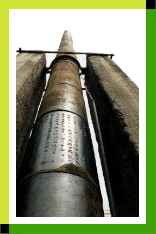
YongdusajiCheoldanggan (Iron Flagpole at Yongdu Buddhist Temple Site)
National Treasure No. 41
The Iron Flagpole of Yongdusa Temple
It is an iron flagpole set up in front of the temple to hang the flag called "Dang" on it for honoring the dignity and merits of Buddha and for realizing justice. Standing between two granite supports, the 13.1m-high flagpole, made of twenty iron cylinders, is one of precious relics. It is embossed with the word "Junpung", Goryeo Dynasty's unique title for the year and its construction year (the 13th year of Kwangjong of Goryeo Dynasty, 962) on its thrid cylinder. But the size of Yongdusa temple to which this flagpole used to belong remains unknown. A legend says that a monk named Haewon got revelation from Buddha to build a sail to prevent Cheongju from being flooded by rain. Cheongju was often called "Juseong" because of its resemblance to a boat floating on water, And, the monk Haewon ordered Kim Ye-jong, one of his Buddhistical students, to build this flagpole. -
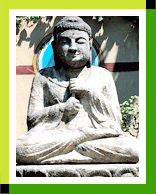
Gyeyumyeongjeonssiamitabulsamjonseoksang (Stone triad amitabha with attendants and 28 other buddhist images, inscriptions of the cycle year of Gyeyu)
National Treasure No. 106 -
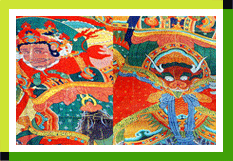
Ansimsa Youngsan Hoesang Bultaeng (Buddhist Painting)
National Treasure No. 297
A Buddhist painting that is stored in a wooden box in Birojeon of Ansimsa Temple that is located on the west side of Guryongsan in Jeolgol maeul of Sadong-ri. Although upper portion of this drawing is slightly damaged, state of preservation is fairly good overall as the color is almost unfaded.
Description of the painting: The main figure of this Youngsan Hoesangdo is Buddha who is assisted on both sides by Bodhisattvas, Guardian Deities, and Buddhist disciples.
Judging from the hair style and facial features of the Buddha, this painting shows the painting techniques of the mid-Chosun period. At the bottom of the painting, there is the date explaining when the painting was created: The year is 1652, written in Chinese ink.
Treasure
-

Gichukmyeongamitayeoraejebulbosalseoksang (Stone Amitabha with bodhisattvas and with inscriptions of the cycle year of Gichuk)
Treasure No. 367 -
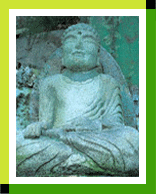
Mireukbosalbangaseoksang (Seated stone Maitreya bodhisattva)
Treasure No. 368 -

Sunseongjwari4(sa)deunggongsinnokgwon (Certificate of Merit for Kim Giltong)
Treasure No. 716 -
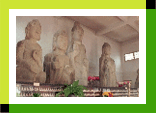
Yonghwasaseokbulsanggun (Seven stone Buddhist statues at Yonghwasa Temple)
Treasure No. 985 -
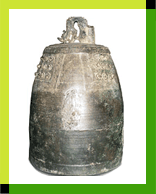
Cheongjuuncheondongchultodongjong (Bronze bell from Uncheon-dong)
Treasure No. 1167 -
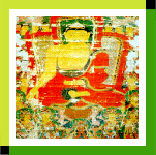
Bosalsayeongsanhoegwaebultaeng (Buddhist painting in Bosalsa Temple)
Treasure No. 1258 -
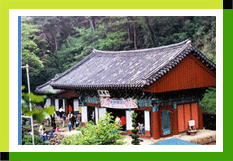
Ansimsa Daeungjeon
Treasure No. 664
Buddhist sanctum where the Main Buddha is enshrined. This wooden building was rebuilt in 775 by Master Priest Jinpyo, and rebuilt again in 1626 by Master Priest Songam.
The present building is estimated to be the one that was rebuilt in 1626. According to the roof-tile inscription, the building was repaired again in 1672. It is assumed that the building was repaired several times thereafter.
The three-stage foundation used untrimmed natural stone as the main plate. In terms of structure, the building had 3 kan(Room) on the front and 2 kan(Room) on the sides. The building had gabled multi-column pillars, and the ceiling was equipped with datjib to make it look more august. -
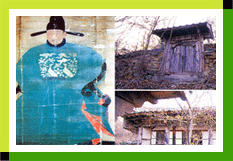
Bohanjae Yeongjeong (Portrait)
Treasure No. 613
Enshrined in this house is a portrait of Shin Suk-chu(1417-75), a famous statesman during the early Choson period(1392-1910). A man of great learning and literary talent, Shin served six kings from Sejong(r. 1418-50) to Songjong(r.1469-94) and was awarded many meritorious titles.
The design of the breast emblem indicates the portrait was painted in 1455, the first year of King Sejo (r.1455-68), when Shin was awarded the title given to those who contributed to Sejo's enthronement.
Seated on a stool in an official green garment and a black hat, with his face slightly turned toward left, Shin is portrayed in the posture standard to official portraits in the early Choson era. The drawing and ink application are the work of a highly skilled hand. The sligh coloring appears to have been added at a later date. The smudging and the meticulous depiction of the facial wrinkles, together with the flowing lines of the garments, make it a remarkable work of art. -
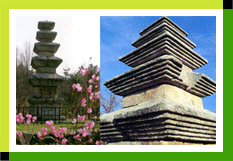
Gyesan-ri Otseung Seoktop (Gyesan-ri Stone Pagoda)
Treasure No. 511
This stone pagoda that is located on a Gyesan-ri market is the only remaining stone structure from the old temple site of Gyesan-ri. The old temple site was transformed to rice paddies and plowing fields. Only this stone pagoda stands at the center of the old temple site.
Single story foundation and the main trunk of 5-story pagoda are in original shape, but the top portion is no longer there. Overall, however, preservation state is relatively good. Main trunk of the pagoda on each story is not supported by corner pillars or auxiliary pillars. The first story is made up of 4 facial stones (slabs), but upper stories are made up of 1 facial stone (slab).
As for capping stones, only the first and the second stories employed 2 stones but the rest employed only one stone. Support for the capping stone by layer consists of 5 dan for the first and the second stories, 4 dan for the third and the fourth stories, the 3 dan for the fifth story, thereby giving stability to the structure as the dans are incrementally reduced. The fact that tip angle is not treated with a curb line and it has a short raindrop can be regarded as a peculiar feature, which is found only in pagodas that are made of earthen tiles.
Characteristically, at the top of the capping stone on each story, 1 stair of support-base is provided to receive upper level trunk stone. To summarize, there are no corner pillars or auxiliary pillars on the foundation or on the trunk, the capping stones are not treated with curb lines and they have short raindrops. This type of pagoda-building technique seems to be local variation of this area.
Historic Sites
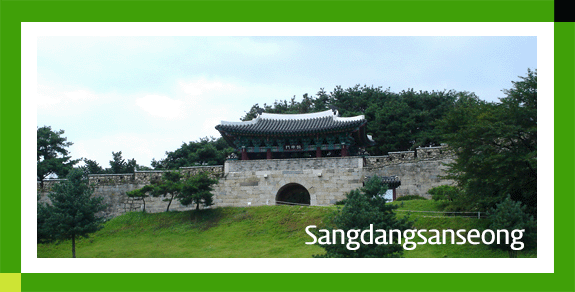
-
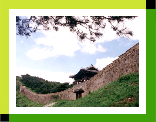
Sangdangsanseong (Sangdang Mountain Fortress)
Historic Sites No. 212
Sangdang-sanseong is a huge parabolic stone fortress. Its name might come from Sangdang-hyeon of Baekje, one of Three Kingdoms. Its circumference is 4km long, and the size of its inner part is 1,808,000㎡. Unfortunately the exact construction year is unknown, but the historical book on Three Kinfdoms called Samguksagi shows some records of this site. The present fortress is the one rebuilt in the year of King Sukjong (1716) after its reparation during the invasion of Japan in the 29th year of King Seonjo (1596).
Sangdang-sanseong presently has three main gates (East, West, and South Gates), two plain gates, three turrets, and three waterways. Through the maintenance construction, the turrets of the East and the South Gate, and the Tower of the East Gate (Dongjangdae) were rebuilt. Meanwhile the site of the Tower of the West Gate(Seojangdae) was also found -
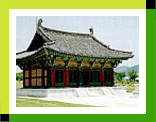
Heungdeoksaji (Heungdeok Temple site)
Historic Sites No. 315 -
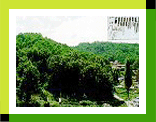
Cheongjusinbongdongbaekjegobungun (Tombs from the Baekje Period in Sinbong-dong)
Historic Sites No. 319
Known as the remains of the ancient tombs of the Baekje Kingdom, this covers a total area of 191,700m². Through four excavation researches on 244 graves(3 tombs, 15 earthenware coffins, and 266 mud graves), 1,551 items of relics including earthenware and ironware were excavated. Iron armors, a bronze drum, and quivers were unearthed from the Baekje Kingdom area for the first time.
It shows that the place is the greatest concentration site of wood-boarded mud graves from the Baekje era. This place might clarify the territory of the Baekje and the history of Cheongju -
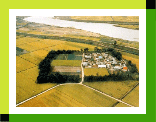
Cheongjujeongbukdongtoseong (Earthen fortification in Jeongbuk-dong)
Historic Sites No. 415
It is a676m-long earthen fortress located in the plains of the Miho Stream. At first it was built in the era of former three kingdom. Later it was complemented in the early and middle part of the three kingdom era and remains almost perfectly today. The fortress is square-shaped with the exterior section in the shape of a ladder pointing put in all directions. The four corners are slightly higher and extruding out, showing that there might be turrets. In particular, the South and the West Gate were unique in that the fortress walls were built in a crisscross fashion, and are considered as an early type of fortress construction
Important Folklore Materials
-
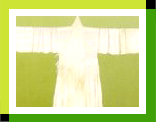
Chultosuncheonkimssiuibokganchal (Clothing letter and other artifacts of Lady Kim excavated)
Important Folklore Materials No. 109 -
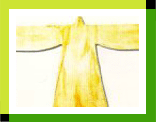
Cheongwonguryesonssimyochultoyumul (Clothing excavated from the tomb of Lady Gurye Son Clan in Cheongwon)
Important Folklore Materials No. 116 -
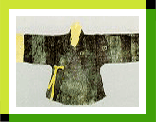
Cheongwonjeonparkjanggunchultoyumul (Relics from the tomb attributed to General Park in Cheongwon)
Important Folklore Materials No. 117 -
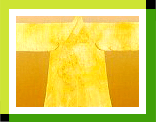
Jungwonkimwimyochultoyumul (Clothing from the tomb of Kim Wi in Jungwon)
Important Folklore Materials No. 118 -
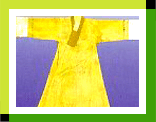
Andongkimssimyochultoyumul (Clothing from the tomb of Andong Kim Clan)
Important Folklore Materials No. 217 -
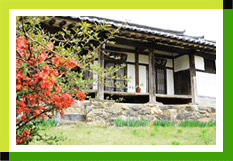
Gwa Pil Heon Goga (Old House of Gwa Pil Heon)
Folk Material No. 8
Gwa Pil Heon Goga is a traditional Korean house that was built by Shin Hu (Gwa Pil Heon; 1708∼1779). The building had a linear Inner House that was 6 kan(Room) on the front and 2 kan(Room) on the sides, that was divided into a 3 kan(Room) Main Floor at the center, 1 kan(Room) across-the-room on the left, and on the right a 2 kan(Room) inner room with front floor and a kitchen. In front of the Inner House, there stood a middle door and a storage room for grain. The Outer House, that was 6 kan(Room) on the front and 3 kan(Room) on the sides, was divided into a 2 kan(Room) inner room and a kitchen. Both Inner House and Outer House had a gabled tile-roof with a single layer of eaves. At present, Shin Osik and his family lives in this building. -
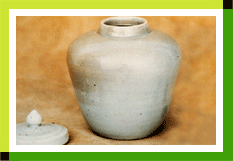
Park Kwan-u Myoso Chulto Yumul (Artifacts Excavated from Park Gwangu’s Grave)
Folk Material No. 6
These relics were retrieved from the tomb of Pak Kwan-u (1495-1545), a government official during the reign of King Chungjong(r. 1506-44)of Choson(1392-1910), when it was moved from P'aju-gun, Kyonggi-do to Ch'ongwon-gun, Ch'ungch'ongbuk-do.
The double coffin of a typical narrow bottom style is made of Chinese juniper wood and is almost intact. The inner coffin is 250.5㎝ long and 69.6㎝ wide and the outer one is 280㎝ long and 99.5㎝ wide. Inside the coffin is a board called ch'ilsongp'an, or the "seven star board," on which the body was placed. It has seven holes burnt into it to represent the Seven Stars, or the Big Dipper, which is of great significance in the Shamanism.
The five bronze bells were recovered at the foot of the body. The tiny 2.3㎝-high, 2.6㎝-wide porcelain jar is a typical Choson funerary item, but it is not certain if the lid with a lotus bud-shaped holder actually belongs to it.
Other relics indlude a stone table, a stele and a memorial tablet, the epitaph of which was written by a great Confucian scholar and statesman Song Shi-yol. -
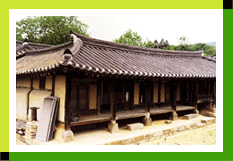
Yu Gyehwa House
Folk Material No. 138
This comparatively well-preserved upper-class civilian residence was built in 1866. It comprises two U-shaped structures interlocked together in a classical fashion to form a square enclosing a courtyard. The anch'ae, the women's living area, is built on a foundation higher than the sarangch'ae, the men's quarters. It incorporates some features of houses of the southern region, namely the main living room in the east facing the courtyard and the other room in the west facing the outer garden. In the center of the sarangch'ae is the master's room. There is a small wooden-floored hall in the west, which indicates that the master of the house did not expect to receive many visitors.
A middle gate in the western corner of the house, and another in the east allows passage to the back garden. There is no servant quarters, though such is a regular feature of this kind of residence. Deviations from the general style are also evident in other parts of the house. -
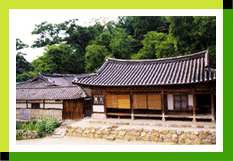
Lee Hanghee House
Folk Material No. 133
This house comprises an inner area consisting of an L-shaped inner house, the women's living quarters, a servant quarters to its front, and two storage houses to the east and west, and an outer area, the center of which is the sarangch'ae, the men's quarters.
A building with a layout commonly found in mid-20th century structures, the sarangch'ae is separated from the neighboring houses by a front garden and a hedge of spindle trees. The anch'ae, which was built in 1861, has a layout typical of middle class houses of the central region: a kitchen, a main living room, an auxiliary room in the west and the main wooden floored hall around the corner from which is another room.
Most notable about the house is the landscaping including the placement of the main gate at the eastern end of the servant quarters, the middle gate that opens to the inner area, and the traditionally placed Oriental quince tree, juniper and persimmons in the front and back gardens of the inner area.